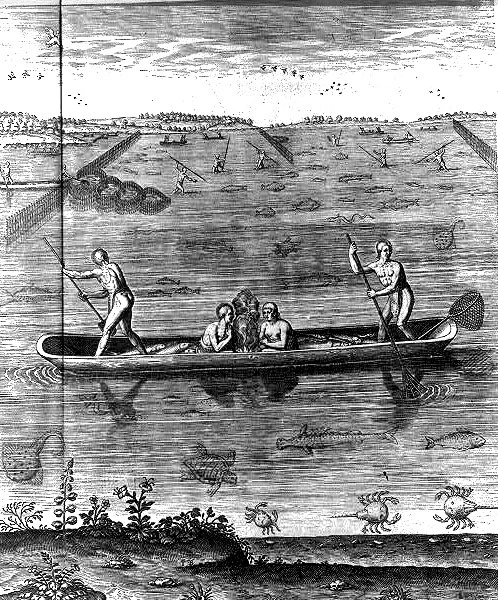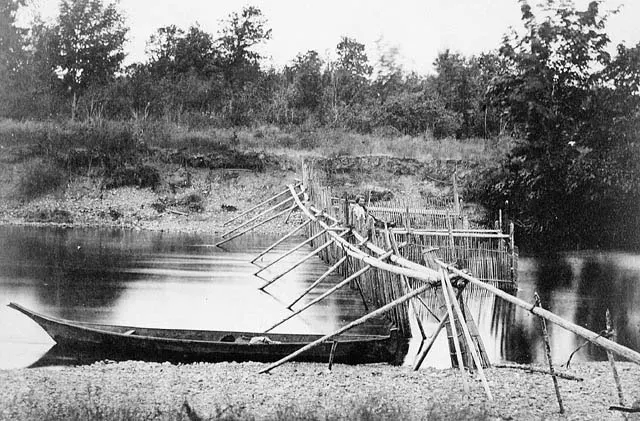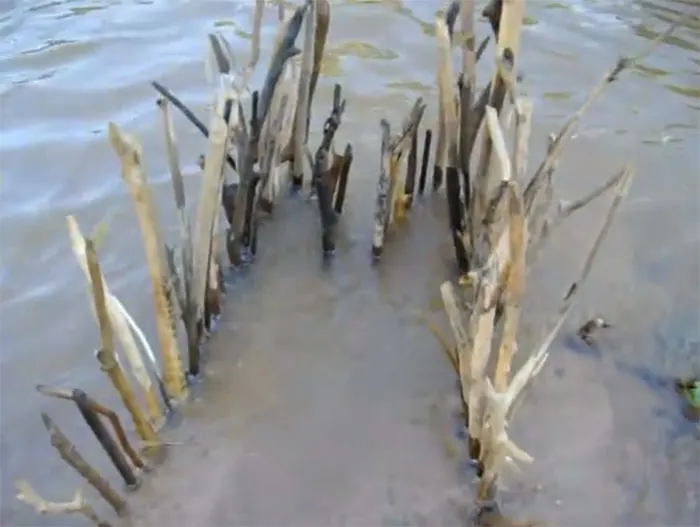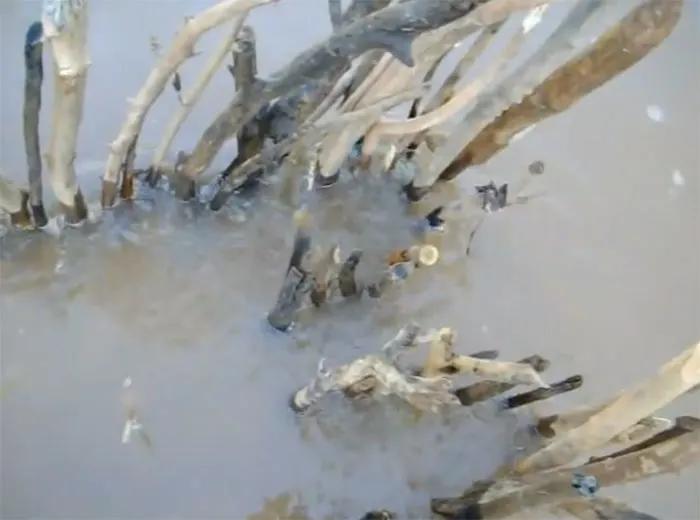Fish traps, also called weirs, have been utilized for thousands of years all over the world for catching fish in rivers, lakes, and oceans. They were widely used by Native Americans to catch large amounts of fish for trade and for food.
Traditional weirs, usually made of stone or wood, were often very large, built to catch a lot of fish at once. The same idea can be used on a small scale for catching fish for food in a survival situation.
Note – trapping fish is illegal in most areas, so this idea is intended for survival purposes only. Check your local regulations to see if trapping is allowed in your area before using this method for anything other than an emergency.

Native Americans fishing with spears and a weir. Engraved in 1590 by Theodor de Bry.
The idea behind a fishing weir, whether large or small, is to create a trap that will contain fish with an opening that they can swim into but can not easily swim out of.

Salmon weir at Quamichan Village on the Cowichan River, Vancouver Island, ca 1866 | Dally, Frederick
Most fishing weirs are built with a V-shaped opening, with the wide part of the V facing out into the open water and narrowing into the trap. When fish swim into the trap, they usually can not find the narrow opening and swim back out.

Stone weir in Penghu, Taiwan: kuenlin/Shutterstock
A small, simple fish trap can be made in a lake or stream using nothing more than sticks pushed into the mud, as demonstrated by Tim Jones on YouTube.
The sticks make a fence of sorts to keep the fish contained. If the sticks are placed close enough together, even small fish will not be able to escape the trap.

Tim Jones | YouTube
More sticks are used to form the entrance of the trap, creating the “funnel” for fish to enter. The entrance needs to be made large enough to allow decent-sized fish to swim into the opening.

Tim Jones | YouTube
The final step is to add some sort of bait to the trap. Bait can usually be found pretty easily along the edge of a body of water if no other source is available.
Dead fish and worms make good bait, as does corn, bread, or anything else edible you might have on hand. In this example, meat from a broken clam shell attracted a catfish into this trap.

Tim Jones | YouTube
Again, because of anti-trapping laws, building a fish trap should only be used in emergency survival scenarios. But because it is a simple way to get food when no other equipment is available, it is a great skill to utilize if you do end up in such a situation.